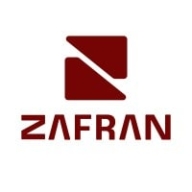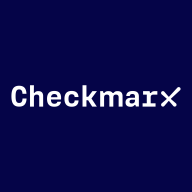


Checkmarx One and Vicarius vRx compete in the vulnerability management category. Checkmarx One appears to have the upper hand in integration capabilities and developer-friendliness, whereas Vicarius vRx offers more automation and real-time protection.
Features: Checkmarx One offers comprehensive scanning and integration capabilities, static application security testing for uncompiled code, and integration with popular repositories, supporting numerous programming languages. Vicarius vRx focuses on vulnerability management, featuring automated patching, patchless protection for known vulnerabilities, and real-time protection, providing broader coverage.
Room for Improvement: Checkmarx One could reduce false positives and enhance language support, improve reporting, and customize features. Vicarius vRx would benefit from better automation of patchless protection, improved report configuration options, and streamlined user processes for login and portal navigation.
Ease of Deployment and Customer Service: Checkmarx One offers flexible deployment options including on-premises, public, and hybrid cloud solutions. Its technical support is generally rated high, though response times vary. Vicarius vRx operates in the cloud, providing simplicity and ease of management with well-regarded customer service and technical support, though system navigation improvements would be beneficial.
Pricing and ROI: Checkmarx One is considered expensive but offers a significant return on investment through comprehensive features and enhanced security measures, though its licensing model can be complex. Vicarius vRx, while also at a higher price point, presents competitive pricing with per-asset flexibility, making it easier to scale according to client needs, enhancing security and operational efficiency.
| Product | Market Share (%) |
|---|---|
| Vicarius vRx | 0.9% |
| Checkmarx One | 1.3% |
| Zafran Security | 1.1% |
| Other | 96.7% |

| Company Size | Count |
|---|---|
| Small Business | 32 |
| Midsize Enterprise | 9 |
| Large Enterprise | 45 |
| Company Size | Count |
|---|---|
| Small Business | 11 |
| Midsize Enterprise | 7 |
| Large Enterprise | 3 |
Zafran Security integrates with existing security tools to identify and mitigate vulnerabilities effectively, proving that most critical vulnerabilities are not exploitable, optimizing threat management.
Zafran Security introduces an innovative operating model for managing security threats and vulnerabilities. By leveraging the threat exposure management platform, it pinpoints and prioritizes exploitable vulnerabilities, reducing risk through immediate remediation. This platform enhances your hybrid cloud security by normalizing vulnerability signals and integrating specific IT context data, such as CVE runtime presence and internet asset reachability, into its analysis. No longer reliant on patch windows, Zafran Security allows you to manage risks actively.
What are the key features of Zafran Security?
What benefits can users expect from Zafran Security?
In industries where security is paramount, such as finance and healthcare, Zafran Security provides invaluable protection by ensuring that only exploitable vulnerabilities are addressed. It allows entities to maintain robust security measures while allocating resources efficiently, fitting seamlessly into existing security strategies.
Checkmarx One is an enterprise cloud-native application security platform focused on providing cross-tool, correlated results to help AppSec and developer teams prioritize where to focus time and resources.
Checkmarx One offers comprehensive application scanning across the SDLC:
Checkmarx One provides everything you need to secure application development from the first line of code through deployment and runtime in the cloud. With an ever-evolving set of AppSec engines, correlation and prioritization features, and AI capabilities, Checkmarx One helps consolidate expanding lists of AppSec tools and make better sense of results. Its capabilities are designed to provide an improved developer experience to build trust with development teams and ensure the success of your AppSec program investment.
Vicarius vRx automates patching and vulnerability mitigation with patchless protection, appreciated for effective third-party app patching and vulnerability prioritization. The platform offers streamlined management via intuitive dashboards, consolidating vulnerability discovery and remediation.
Vicarius vRx streamlines the patching and vulnerability mitigation process, delivering automation through patchless protection. It is favored for its ability to handle third-party applications effectively while providing vulnerability prioritization. The platform's intuitive dashboards allow for efficient management, consolidating vulnerability discovery and remediation efforts. Users note the robust scripting engine and supportive community as significant assets in mitigating critical threats, reducing manual effort and remediation time. Despite the strengths, enhancements in areas like automating patchless solutions, simplifying the login process, and refining networking vulnerability scanning capabilities are needed. The patch update process, reporting, and scripting functionalities require improvements. Name changes have resulted in some confusion, and additional filtering options are desired, along with better cloud integration and system feedback on update statuses. Logging options and mobile device management support are sought after by organizations.
What are the key features of Vicarius vRx?Managed service providers utilize Vicarius vRx for compliance needs, focusing on PCI and HIPAA requirements, vulnerability management, and patching. They use it extensively for patch management, covering both Microsoft and third-party updates, and for centralized update management. It aids in achieving visibility and automation, ensuring quick application of necessary patches across numerous assets while enhancing cybersecurity effectiveness with its network functionality and audit compliance features.
We monitor all Vulnerability Management reviews to prevent fraudulent reviews and keep review quality high. We do not post reviews by company employees or direct competitors. We validate each review for authenticity via cross-reference with LinkedIn, and personal follow-up with the reviewer when necessary.